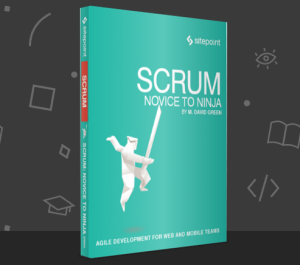Key Takeaways
- Encouraging face-to-face interactions, responding promptly to messages, and maintaining a friendly, approachable demeanor are crucial for fostering customer satisfaction.
- Having a clear customer service policy, paying attention to detail, anticipating client needs, and honoring promises can significantly enhance the customer experience and promote loyalty.
- Customer satisfaction not only involves delivering quality products or services but also extends to providing excellent customer service and seeking feedback for continuous improvement.
This article was written in 2011 and remains one of our most popular posts. If you’re keen to learn more about working with clients and customers, you may find this recent article about landing larger clients of great interest.
It’s a well-known fact that no business can exist without customers. In the business of website design, it’s important to work closely with your customers to make sure the site or system you create for them is as close to their requirements as you can manage. Because it’s critical that you form a close working relationship with your client, customer satisfaction is of vital importance. What follows is a selection of tips that will make your clients feel valued, wanted and loved.
1. Encourage Face-to-Face Dealings
This is the most daunting and downright scary part of interacting with a customer. If you’re not used to this sort of thing it can be a pretty nerve-wracking experience. Rest assured, though, it does get easier over time. It’s important to meet your customers face to face at least once or even twice during the course of a project.
My experience has shown that a client finds it easier to relate to and work with someone they’ve actually met in person, rather than a voice on the phone or someone typing into an email or messenger program. When you do meet them, be calm, confident and above all, take time to ask them what they need. I believe that if a potential client spends over half the meeting doing the talking, you’re well on your way to a sale.
2. Respond to Messages Promptly & Keep Your Clients Informed
This goes without saying really. We all know how annoying it is to wait days for a response to an email or phone call. It might not always be practical to deal with all customers’ queries within the space of a few hours, but at least email or call them back and let them know you’ve received their message and you’ll contact them about it as soon as possible. Even if you’re not able to solve a problem right away, let the customer know you’re working on it.
A good example of this is my web host. They’ve had some trouble with server hardware which has caused a fair bit of downtime lately. At every step along the way I was emailed and told exactly what was going on, why things were going wrong, and how long it would be before they were working again. They also apologised repeatedly, which was nice. Now if they server had just gone down with no explanation I think I’d have been pretty annoyed and may have moved my business elsewhere. But because they took time to keep me informed, it didn’t seem so bad, and I at least knew they were doing something about the problems. That to me is a prime example of customer service.
3. Be Friendly and Approachable
A fellow SitePointer once told me that you can hear a smile through the phone. This is very true. It’s very important to be friendly, courteous and to make your clients feel like you’re their friend and you’re there to help them out. There will be times when you want to beat your clients over the head repeatedly with a blunt object – it happens to all of us. It’s vital that you keep a clear head, respond to your clients’ wishes as best you can, and at all times remain polite and courteous.
4. Have a Clearly-Defined Customer Service Policy
This may not be too important when you’re just starting out, but a clearly defined customer service policy is going to save you a lot of time and effort in the long run. If a customer has a problem, what should they do? If the first option doesn’t work, then what? Should they contact different people for billing and technical enquiries? If they’re not satisfied with any aspect of your customer service, who should they tell?
There’s nothing more annoying for a client than being passed from person to person, or not knowing who to turn to. Making sure they know exactly what to do at each stage of their enquiry should be of utmost importance. So make sure your customer service policy is present on your site — and anywhere else it may be useful.
5. Attention to Detail (also known as “The Little Niceties”)
Have you ever received a Happy Birthday email or card from a company you were a client of? Have you ever had a personalised sign-up confirmation email for a service that you could tell was typed from scratch? These little niceties can be time consuming and aren’t always cost effective, but remember to do them.
Even if it’s as small as sending a Happy Holidays email to all your customers, it’s something. It shows you care; it shows there are real people on the other end of that screen or telephone; and most importantly, it makes the customer feel welcomed, wanted and valued.
6. Anticipate Your Client’s Needs & Go Out Of Your Way to Help Them Out
Sometimes this is easier said than done! However, achieving this supreme level of understanding with your clients will do wonders for your working relationship.
Take this as an example: you’re working on the front-end for your client’s exciting new ecommerce endeavour. You have all the images, originals and files backed up on your desktop computer and the site is going really well. During a meeting with your client he/she happens to mention a hard-copy brochure their internal marketing people are developing. As if by magic, a couple of weeks later a CD-ROM arrives on their doorstep complete with high resolution versions of all the images you’ve used on the site. A note accompanies it which reads:
“Hi, you mentioned a hard-copy brochure you were working on and I wanted to provide you with large-scale copies of the graphics I’ve used on the site. Hopefully you’ll be able to make use of some in your brochure.”
Your client is heartily impressed, and remarks to his colleagues and friends how very helpful and considerate his Web designers are. Meanwhile, in your office, you lay back in your chair drinking your 7th cup of coffee that morning, safe in the knowledge this happy customer will send several referrals your way.
7. Honor Your Promises
It’s possible this is the most important point in this article. The simple message: when you promise something, deliver. The most common example here is project delivery dates.
Clients don’t like to be disappointed. Sometimes, something may not get done, or you might miss a deadline through no fault of your own. Projects can be late, technology can fail and sub-contractors don’t always deliver on time. In this case a quick apology and assurance it’ll be ready ASAP wouldn’t go amiss.
Conclusion
Customer service, like any aspect of business, is a practiced art that takes time and effort to master. All you need to do to achieve this is to stop and switch roles with the customer. What would you want from your business if you were the client? How would you want to be treated? Treat your customers like your friends and they’ll always come back.
If you enjoyed reading this post, you’ll love Learnable; the place to learn fresh skills and techniques from the masters. Members get instant access to all of SitePoint’s ebooks and interactive online courses, like Build a Successful Web Design Business.
Frequently Asked Questions (FAQs) about Customer Satisfaction
What are the key indicators of customer satisfaction?
Key indicators of customer satisfaction include repeat purchases, customer loyalty, positive reviews, and referrals. These indicators show that customers are happy with the product or service and are willing to continue their relationship with the business. Additionally, customer feedback, whether through surveys or direct communication, can provide valuable insights into their level of satisfaction.
How can I improve customer satisfaction in my business?
Improving customer satisfaction involves understanding your customers’ needs and expectations, delivering quality products or services, providing excellent customer service, and seeking feedback for continuous improvement. Regularly monitoring customer satisfaction levels and making necessary adjustments can also help improve customer satisfaction.
What is the role of customer service in customer satisfaction?
Customer service plays a crucial role in customer satisfaction. It is the direct line of communication between a business and its customers. Good customer service can resolve issues, answer queries, and provide assistance, thereby enhancing customer satisfaction.
How can I measure customer satisfaction?
Customer satisfaction can be measured using various methods such as surveys, feedback forms, net promoter score (NPS), customer satisfaction score (CSAT), and customer effort score (CES). These tools can help businesses understand how satisfied their customers are and identify areas for improvement.
Why is customer satisfaction important for a business?
Customer satisfaction is important as it leads to customer loyalty, repeat purchases, and positive word-of-mouth, which can drive business growth. Satisfied customers are more likely to stay with a company and recommend it to others.
How does customer satisfaction impact the bottom line?
Customer satisfaction directly impacts a business’s bottom line. Satisfied customers are more likely to make repeat purchases, refer others, and become loyal customers, all of which increase revenue. Additionally, it is more cost-effective to retain existing customers than to acquire new ones.
What is the difference between customer satisfaction and customer loyalty?
While customer satisfaction refers to the level of happiness a customer has with a product or service, customer loyalty refers to a customer’s willingness to continue doing business with a company over time. A satisfied customer may not necessarily be loyal, but a loyal customer is likely to be satisfied.
How can I use customer feedback to improve satisfaction?
Customer feedback can provide valuable insights into what customers like or dislike about your product or service. By analyzing this feedback, you can identify areas for improvement and make necessary changes to enhance customer satisfaction.
What are some common mistakes businesses make when trying to improve customer satisfaction?
Common mistakes include not seeking or ignoring customer feedback, failing to resolve customer complaints promptly, not training staff adequately in customer service, and not setting clear expectations for customers.
How can technology help in improving customer satisfaction?
Technology can help improve customer satisfaction by enabling businesses to provide faster and more efficient service, personalize customer experiences, and gather and analyze customer feedback more effectively. Tools like CRM systems, chatbots, and analytics software can be particularly useful.
Adrian is a part time Web designer / developer alongside his full-time career as a qualifying social worker and community trainer in the North of the UK. His main interests lie in the areas of accessible Website design, the development and promotion of online learning and the practical uses of the Web in community regeneration and people-focussed work.




